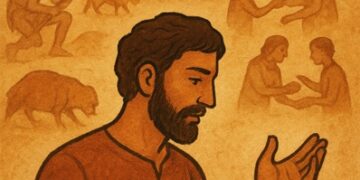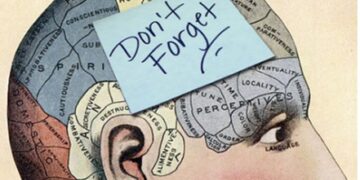Every year, the release of the “World’s Top 2% Scientists” list—compiled by researchers at Stanford University in collaboration with Elsevier—sparks an almost ritualistic celebration across academic institutions worldwide. In India, as in many parts of Asia and the Middle East, universities take immense pride in announcing the number of their faculty who have “made it” to the list. Press releases are drafted overnight, local newspapers feature interviews with the featured scientists, and social media fills with congratulatory posts hailing the “world-class achievements” of the institution. For many, inclusion on the list is treated as the pinnacle of scientific recognition—a global stamp of intellectual excellence.
However, beyond the applause and digital banners lies a harsh truth. The Top 2% Scientists list is not an award, nor is it an official ranking from Stanford University. It is a bibliometric database, developed by a team led by Professor John Ioannidis, that uses data from Scopus—a citation indexing service—to identify researchers whose published work places them within the top two percent of citation metrics globally. The methodology relies on a composite indicator derived from several variables, including total citations, h-index, co-authorship patterns, and author position. Its intent is analytical: to understand citation behaviour and research influence, not to measure excellence or confer prestige.
Through his LinkedIn post, Professor G.D. Yadav, former Vice Chancellor of the Institute of Chemical Technology, Mumbai, aptly observed that the list should be understood as a data product—a snapshot of global research activity—rather than a validation of scholarly superiority. Yet this nuance is often lost in translation. The moment the list is published, it is transformed in public discourse into something much grander: an emblem of personal achievement, institutional prestige, and national pride.
Universities, driven by the pressures of global competition and public accountability, are quick to claim credit. It is common to see congratulatory advertisements in newspapers listing the names of “top scientists” associated with a university. Some institutions hold elaborate felicitation ceremonies, complete with speeches, certificates, and photo sessions. For administrators, these announcements serve as measurable proof of international competitiveness. For the scientists featured, it offers a moment of pride—and for the public, it seems a reassuring sign that national research is flourishing.
But what does such celebration reveal about our academic culture—and, more importantly, what does it obscure?
The elevation of the Top 2% Scientists list into a badge of honour reflects the growing dominance of metrics in the global academic ecosystem. Citations, h-indices, and impact factors have become the currency of recognition in higher education, often replacing peer judgment or qualitative assessment. Across the world, these metrics influence institutional rankings, funding decisions, and even the personal careers of researchers. Universities use them to boost their standing in global league tables such as Times Higher Education, QS World University Rankings, or Shanghai Rankings. Departments use them in hiring and promotion. Governments and accreditation agencies cite them as indicators of “research productivity.”
The phenomenon is not inherently problematic—bibliometric data are valuable tools for mapping trends, identifying collaboration networks, and understanding research visibility. The challenge arises when these metrics begin to define excellence rather than describe it. When the language of citations replaces the language of contribution, academia risks reducing the complexity of scientific achievement to a series of numerical abstractions.
The deeper problem is one of perception. Being included in the top 2% sounds like belonging to an elite intellectual order—a mark of global distinction. Yet the very construction of such a list ensures that the overwhelming majority of scientists—roughly 98%—will never appear on it, no matter how valuable their work may be. Their absence is not evidence of inadequacy but a reflection of how narrowly the system defines recognition.
These 98% represent the vast, often invisible foundation of the scientific enterprise. They are the researchers who spend years refining experiments, developing technologies, mentoring students, writing code, and producing data that others eventually cite. They are field scientists collecting samples in extreme climates, engineers maintaining research infrastructure, and educators nurturing curiosity in classrooms. Their names may not appear in global rankings, but without their collective labour, science as a social institution would collapse.
And yet, when universities celebrate the “top 2%,” this silent majority often feels excluded. For some, the sense of invisibility is more than symbolic—it translates into professional disadvantage. Early-career researchers, especially in developing countries, internalise the belief that unless their work attracts high citation counts, it is of lesser value. Senior scientists who devote time to mentoring, institution-building, or applied research that benefits society—activities that rarely produce citations—may feel overlooked by systems that equate visibility with worth.
This has subtle but serious consequences. It encourages strategic behaviours: publishing in citation-dense fields, excessive self-citation, or fragmenting research into multiple smaller papers to inflate metrics. It devalues interdisciplinary or community-based work, which often requires long-term engagement but yields fewer immediate citations. Over time, such pressures can distort the very spirit of scientific inquiry, shifting focus from genuine curiosity to performance metrics.
Moreover, citation metrics vary dramatically across disciplines. A theoretical physicist or biomedical researcher can easily accumulate thousands of citations due to the scale and pace of their fields. By contrast, scholars in mathematics, ecology, or the social sciences—where publication cycles are slower and communities smaller—may produce transformative work that remains modestly cited. The result is a skewed picture where certain domains appear inherently “superior,” not because they are, but because they generate more quantifiable visibility.
Globally, the celebration of the Top 2% list mirrors a deeper cultural phenomenon: the rise of “metricocracy” in higher education. Universities, caught in the race for rankings and international recognition, increasingly measure success through numbers—be it citations, patents, or placements. In regions such as East Asia and the Middle East, where governments link institutional funding and faculty incentives to global recognition, these metrics have become both a target and a reward.
However, the tide is beginning to turn. Several leading law schools in the United States have withdrawn from traditional ranking systems, such as the U.S. News & World Report rankings, arguing that they distort academic priorities and undermine equity. In the sciences, too, there is growing acknowledgement that quantitative metrics alone cannot capture what truly matters: originality, integrity, mentorship, collaboration, and social impact. Initiatives such as the San Francisco Declaration on Research Assessment (DORA) and the Leiden Manifesto have called for more responsible use of metrics and greater emphasis on qualitative evaluation.
In India, this reflection is particularly urgent. Our universities are in a phase of rapid expansion and transformation. They aspire to join the ranks of globally recognised institutions but often rely heavily on numerical indicators to demonstrate progress. While celebrating inclusion in international lists may serve short-term visibility, it risks reinforcing a shallow definition of excellence that overlooks the country’s most valuable scientific strengths—its teaching traditions, frugal innovation, and capacity for socially relevant research.
True recognition in science must go beyond numbers. It must include those who build laboratories from the ground up, mentor first-generation scholars, develop indigenous solutions to local challenges, and quietly ensure that institutions function smoothly. These contributions may not generate citations, but they generate capacity—and that is what sustains a scientific nation.
The World’s Top 2% Scientists list, therefore, should be read as a useful bibliometric reference, not as a hierarchy of merit. Its insights into research visibility are valuable, but they should not be mistaken for a measure of worth. Universities would serve their missions better by using such data as a starting point for introspection: What kind of research culture are we nurturing? Are we encouraging creativity, ethical conduct, and social responsibility—or merely chasing numbers?
Science thrives when it values diversity—of methods, disciplines, and contributions. The brilliance of a discovery may lie in a single high-impact paper, but the strength of a scientific community lies in the quiet, collective effort of those who keep the system alive.
Perhaps it is time to shift the conversation. Instead of asking who made it to the Top 2%, we might ask how to support the other 98%—the teachers, mentors, innovators, and dreamers who do the daily work of science without the recognition of an algorithm. For it is they who remind us that science is not a race for visibility, but a lifelong pursuit of understanding and service to society.
The writer is Senior Research Scholar, Department of Earth Sciences,
Pondicherry University, India. yunusbhatt586@gmail.com




